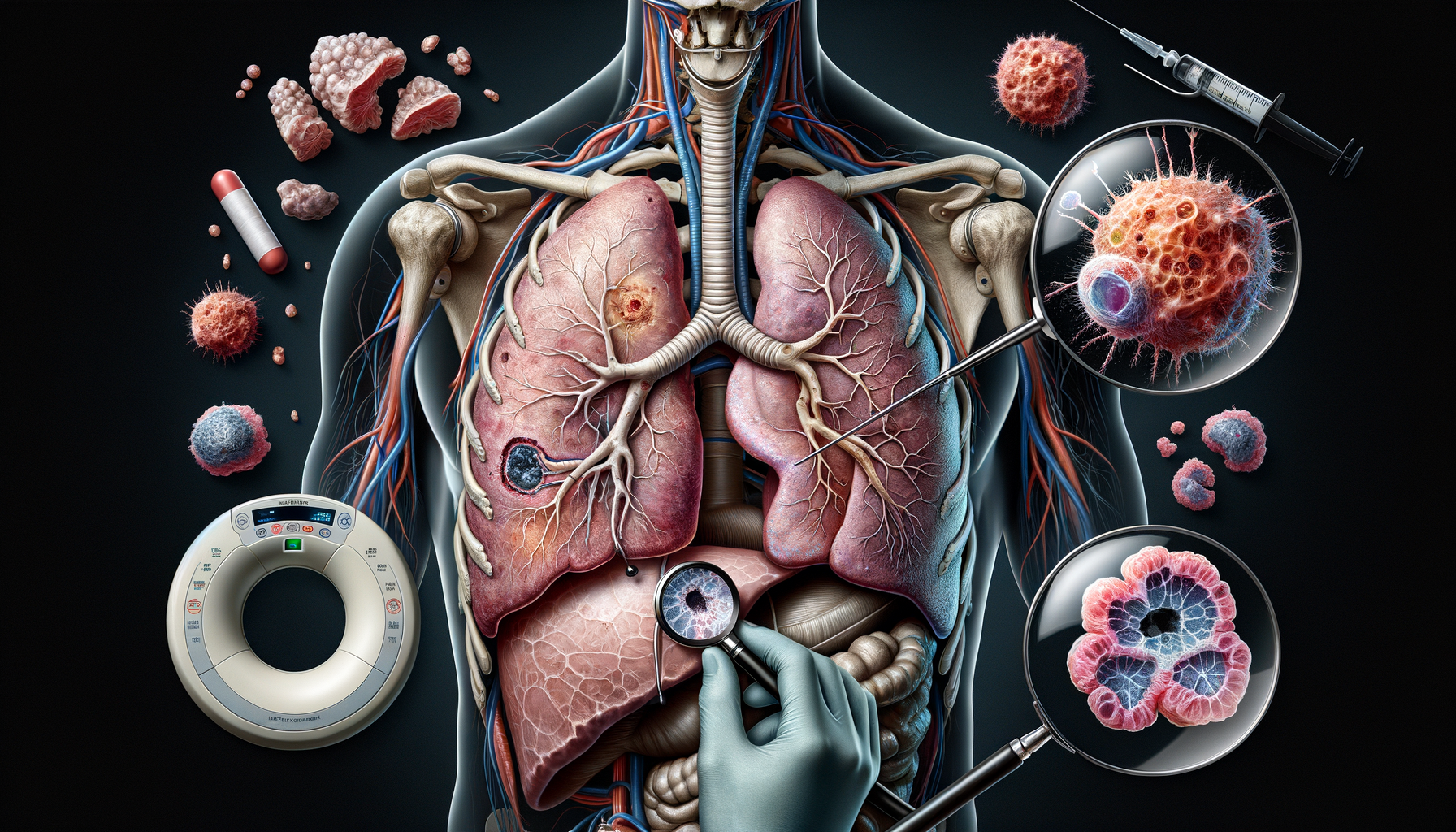
What Doctors Look For When Checking for Lung Cancer Symptoms
Understanding Lung Cancer
Lung cancer is a major health issue worldwide, affecting millions of individuals each year. It arises when cells in the lungs grow uncontrollably, often forming tumors that can spread to other parts of the body. This type of cancer is notorious for its aggressive nature and high mortality rate, making early detection crucial for successful treatment. Understanding lung cancer involves recognizing its two main types: small cell lung cancer (SCLC) and non-small cell lung cancer (NSCLC). SCLC is less common but more aggressive, while NSCLC accounts for about 85% of cases and grows at a slower rate.
Risk factors for lung cancer include smoking, exposure to secondhand smoke, exposure to certain toxins like asbestos, and a family history of the disease. However, even non-smokers can develop lung cancer, highlighting the importance of awareness and regular health check-ups. Symptoms often include persistent cough, chest pain, and shortness of breath, but these can be mistaken for other respiratory conditions, delaying diagnosis. Therefore, understanding the nature and risks of lung cancer is vital for early intervention and improving survival rates.
Common Symptoms and Warning Signs
Detecting lung cancer early can significantly influence treatment success. Doctors look for several symptoms that might indicate the presence of lung cancer. These include a persistent cough that doesn’t go away, coughing up blood, and chest pain that worsens with deep breathing, coughing, or laughing. Other symptoms may involve hoarseness, weight loss, and loss of appetite. Additionally, individuals may experience fatigue and recurrent respiratory infections, such as bronchitis or pneumonia.
It’s important to note that these symptoms can vary depending on the type and stage of lung cancer. For instance, early-stage lung cancer might not cause noticeable symptoms, which is why regular screenings are essential, especially for high-risk individuals. If you experience any of these symptoms, it’s crucial to consult a healthcare professional for a thorough evaluation.
Recognizing these warning signs and seeking medical advice promptly can lead to earlier diagnosis, offering a better chance for effective treatment and improved quality of life.
Diagnostic Procedures for Lung Cancer
When doctors suspect lung cancer based on symptoms or risk factors, they employ various diagnostic procedures to confirm the presence of cancerous cells. The initial step often involves imaging tests, such as chest X-rays or CT scans, which provide detailed images of the lungs and can reveal abnormal masses or nodules.
If imaging tests suggest lung cancer, a biopsy is usually performed to obtain a tissue sample from the lungs. This can be done through several methods, including bronchoscopy, where a thin tube is inserted into the lungs through the mouth or nose, or needle biopsy, where a needle is inserted through the chest wall to collect tissue.
In addition to biopsies, doctors may conduct sputum cytology, examining mucus coughed up from the lungs under a microscope for cancer cells. Advanced diagnostic techniques, such as PET scans or MRI, might be used to determine the cancer’s stage and whether it has spread to other parts of the body. These comprehensive diagnostic procedures help in devising an effective treatment plan tailored to the patient’s specific needs.
Treatment Options for Lung Cancer
Treatment for lung cancer depends on the type, stage, and overall health of the patient. Common treatment options include surgery, radiation therapy, chemotherapy, targeted therapy, and immunotherapy. Surgery is often considered when the cancer is localized and can be removed. This may involve removing a portion of the lung or, in some cases, an entire lung.
Radiation therapy uses high-energy rays to kill cancer cells, often used in conjunction with other treatments. Chemotherapy involves using drugs to destroy cancer cells and is typically used when cancer has spread beyond the lungs. Targeted therapy focuses on specific abnormalities within cancer cells, while immunotherapy helps the immune system recognize and combat cancer cells more effectively.
Each treatment option has its benefits and potential side effects, and the choice depends on various factors, including the patient’s preferences and the cancer’s characteristics. A multidisciplinary team of healthcare professionals works together to provide a comprehensive treatment plan aimed at improving survival rates and maintaining the patient’s quality of life.
Prevention and Early Detection
Preventing lung cancer involves reducing risk factors and promoting healthy lifestyle choices. The most effective way to prevent lung cancer is to avoid smoking and exposure to secondhand smoke. Quitting smoking at any age can significantly reduce the risk of developing lung cancer and improve overall health.
For those at high risk, such as long-term smokers or individuals with a family history of lung cancer, regular screenings are crucial. Low-dose CT scans are recommended for early detection, as they can identify lung cancer at an earlier stage when treatment is more likely to be successful.
Additionally, maintaining a healthy diet, regular exercise, and avoiding exposure to harmful substances like asbestos can contribute to lung health. By focusing on prevention and early detection, individuals can significantly reduce their risk of developing lung cancer and improve their chances of a positive outcome if diagnosed.